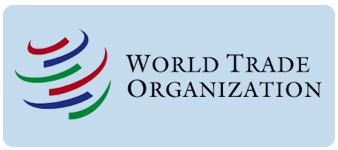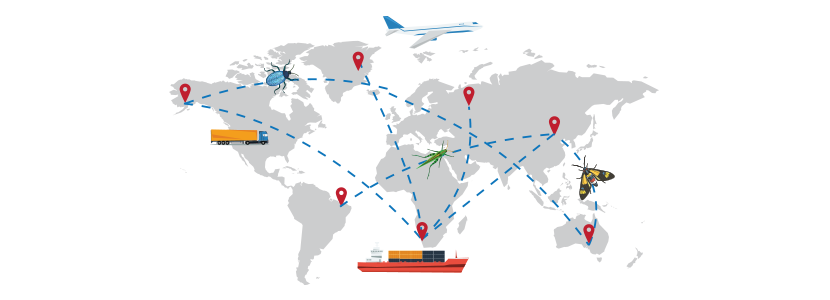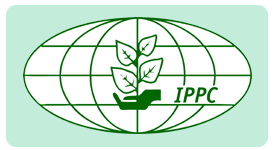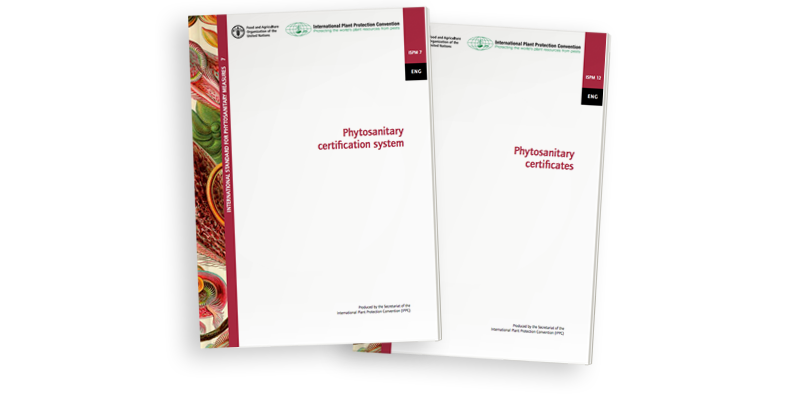Lesson 1: International Phytosanitary Standards
Topic 1: The SPS Agreement
This topic will help you recall how the international community protects agricultural health while minimizing trade barriers.
Objective:
- Describe the purpose of the SPS Agreement.
 In Modules 1 and 2 you learned about the history of how international agreements, laws, and standards were created to encourage safe and open trade of agricultural products. The World Trade Organization (WTO) is the global international organization that deals with rules of trade between nations. To meet its goal of ensuring that trade flows smoothly, predictably, and freely, the WTO develops agreements that are ratified by its member countries and offers an official mechanism for settling trade disputes.
In Modules 1 and 2 you learned about the history of how international agreements, laws, and standards were created to encourage safe and open trade of agricultural products. The World Trade Organization (WTO) is the global international organization that deals with rules of trade between nations. To meet its goal of ensuring that trade flows smoothly, predictably, and freely, the WTO develops agreements that are ratified by its member countries and offers an official mechanism for settling trade disputes.
Unrestricted trade of agricultural products greatly benefits many countries by increasing food security and economic growth. However, the potential for transporting pests and diseases within agricultural consignments can present very real threats to a nation’s economy and agricultural health. The WTO recognizes the need for nations to address these risks, but does not want them to impede trade by creating overly strict regulations that go beyond reasonable protection of agricultural health.
 Navigating the balance between protecting agricultural health and also promoting trade is the role of the WTO Agreement on the Application of Sanitary and Phytosanitary Measures, more commonly known as the SPS Agreement. As you recall, the purpose of this agreement is to allow countries to protect themselves from unwanted, dangerous organisms that could harm human, plant, or animal health, but not in ways that unfairly affect trade. Under the agreement, countries are allowed to enact reasonable SPS measures to protect human, animal, and plant health from pest and disease risks, as long as these measures are justified by scientific evidence or based on international standards. The SPS Agreement identifies the following official organizations as responsible for setting international standards: the Codex Alimentarius for human health (food safety); the World Organization for Animal Health (OIE); and the International Plant Protection Convention (IPPC) for plant health.
Navigating the balance between protecting agricultural health and also promoting trade is the role of the WTO Agreement on the Application of Sanitary and Phytosanitary Measures, more commonly known as the SPS Agreement. As you recall, the purpose of this agreement is to allow countries to protect themselves from unwanted, dangerous organisms that could harm human, plant, or animal health, but not in ways that unfairly affect trade. Under the agreement, countries are allowed to enact reasonable SPS measures to protect human, animal, and plant health from pest and disease risks, as long as these measures are justified by scientific evidence or based on international standards. The SPS Agreement identifies the following official organizations as responsible for setting international standards: the Codex Alimentarius for human health (food safety); the World Organization for Animal Health (OIE); and the International Plant Protection Convention (IPPC) for plant health.
 For the modules in this SPS program, we focused on the IPPC, which is the relevant standard setting organization for the topics in this course. The scope of the IPPC mission applies to all plant life both cultivated and wild, and includes all pathways that could transport plant pests and diseases.
For the modules in this SPS program, we focused on the IPPC, which is the relevant standard setting organization for the topics in this course. The scope of the IPPC mission applies to all plant life both cultivated and wild, and includes all pathways that could transport plant pests and diseases.
While ISPMs should always be used whenever possible, they cannot cover every potential circumstance individual countries may face. Therefore, the SPS agreement allows countries to to develop other protective measures when appropriate international standards and guidelines do not exist. However, these other measures must be science based. In order to justify the need for a protective measure, an importing country gathers scientific evidence to assess the likelihood that a pest(s) could enter, establish, and spread through trade. This process is called pest risk analysis (PRA) and will be reviewed in Lesson 2.

For more details on the concepts covered here, please review Modules 1 and 2 of this course. Please also visit the IPPC website often to stay current with trade rules and standards regarding phytosanitary measures for export.
To continue, select Topic 2 from the Topics menu above or click here.